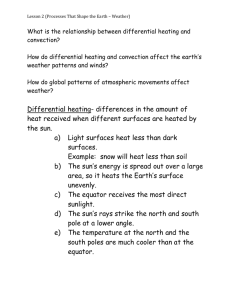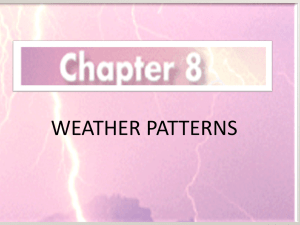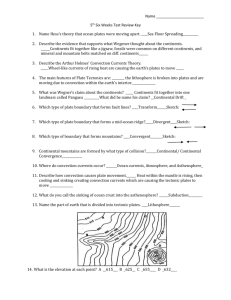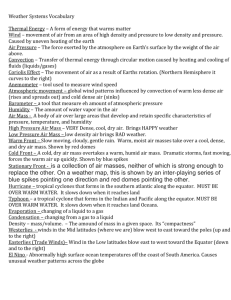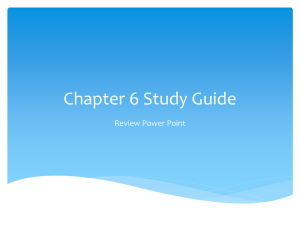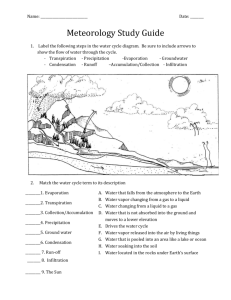Storms Parent Letter
advertisement
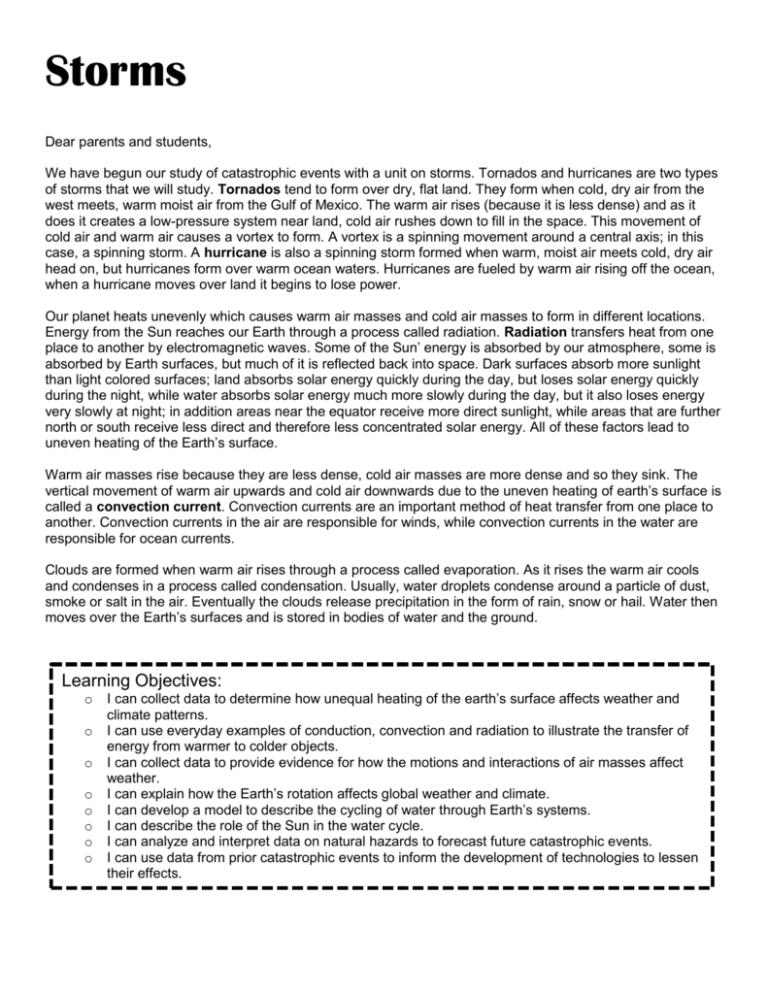
Storms Dear parents and students, We have begun our study of catastrophic events with a unit on storms. Tornados and hurricanes are two types of storms that we will study. Tornados tend to form over dry, flat land. They form when cold, dry air from the west meets, warm moist air from the Gulf of Mexico. The warm air rises (because it is less dense) and as it does it creates a low-pressure system near land, cold air rushes down to fill in the space. This movement of cold air and warm air causes a vortex to form. A vortex is a spinning movement around a central axis; in this case, a spinning storm. A hurricane is also a spinning storm formed when warm, moist air meets cold, dry air head on, but hurricanes form over warm ocean waters. Hurricanes are fueled by warm air rising off the ocean, when a hurricane moves over land it begins to lose power. Our planet heats unevenly which causes warm air masses and cold air masses to form in different locations. Energy from the Sun reaches our Earth through a process called radiation. Radiation transfers heat from one place to another by electromagnetic waves. Some of the Sun’ energy is absorbed by our atmosphere, some is absorbed by Earth surfaces, but much of it is reflected back into space. Dark surfaces absorb more sunlight than light colored surfaces; land absorbs solar energy quickly during the day, but loses solar energy quickly during the night, while water absorbs solar energy much more slowly during the day, but it also loses energy very slowly at night; in addition areas near the equator receive more direct sunlight, while areas that are further north or south receive less direct and therefore less concentrated solar energy. All of these factors lead to uneven heating of the Earth’s surface. Warm air masses rise because they are less dense, cold air masses are more dense and so they sink. The vertical movement of warm air upwards and cold air downwards due to the uneven heating of earth’s surface is called a convection current. Convection currents are an important method of heat transfer from one place to another. Convection currents in the air are responsible for winds, while convection currents in the water are responsible for ocean currents. Clouds are formed when warm air rises through a process called evaporation. As it rises the warm air cools and condenses in a process called condensation. Usually, water droplets condense around a particle of dust, smoke or salt in the air. Eventually the clouds release precipitation in the form of rain, snow or hail. Water then moves over the Earth’s surfaces and is stored in bodies of water and the ground. Learning Objectives: o o o o o o o o I can collect data to determine how unequal heating of the earth’s surface affects weather and climate patterns. I can use everyday examples of conduction, convection and radiation to illustrate the transfer of energy from warmer to colder objects. I can collect data to provide evidence for how the motions and interactions of air masses affect weather. I can explain how the Earth’s rotation affects global weather and climate. I can develop a model to describe the cycling of water through Earth’s systems. I can describe the role of the Sun in the water cycle. I can analyze and interpret data on natural hazards to forecast future catastrophic events. I can use data from prior catastrophic events to inform the development of technologies to lessen their effects. Try This At Home! o o o o o Collect a week’s worth of weather forecasts, paste them onto a sheet of paper and record the actual weather for each date next to the forecast for that day. Discuss the symbols used on weather maps and what they mean for the weather forecast. Look for everyday examples of heat transfer through conduction, (energy transfer from one material to another through direct contact), convection(energy transfer resulting from the circulating motion of a liquid or gas) or radiation. Create chart with all of the examples you find. Take a walking tour around your neighborhood or local park looking for examples of where parts of the water cycle can be seen. Also look for factors that may be affecting the health of our water in those areas. Look for current events related to water quality. Using evidence from the text, define factors that are affecting water quality. Evaluate human impact on water quality and analyze the long-term effects of polluted waterways. Fun Fact Each year there are an estimated 16 million thunderstorms throughout the world! Review TedEd o o o o o o o How Do Tornadoes Form? How to Track a Tornado A Guide To The Energy Of The Earth Water Water Supply How Do We Get Our Fresh Water? Freshwater Scarcity BrainPOP o Weather o Wind o Thunderstorms o Hurricanes o Earth’s Atmosphere o Climate Types o Water Cycle o Ocean Currents ScienceSaurus Pages to Read o 212-230 BrainPOP Login Information Login: Issaquahmiddle Password: Panthers

